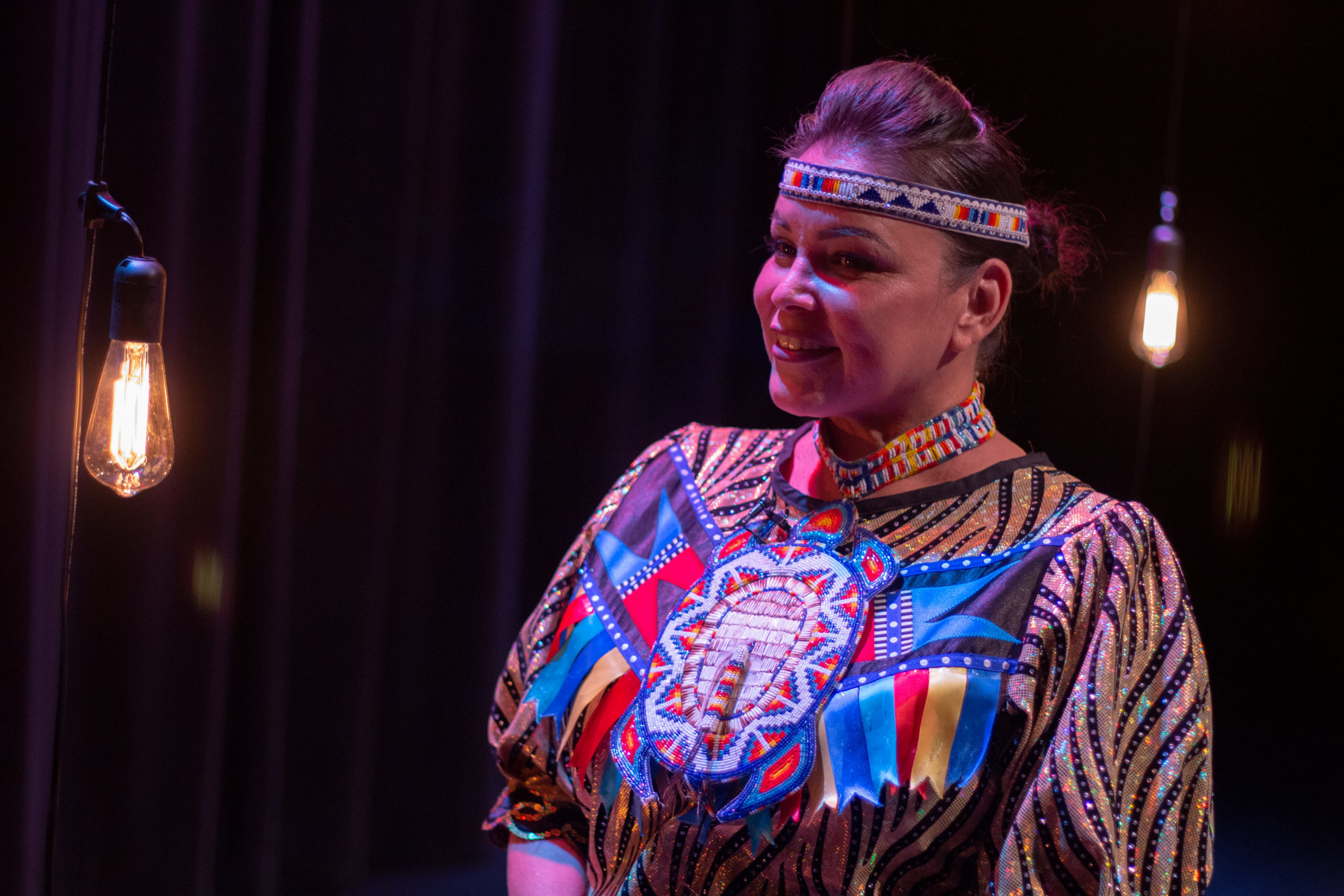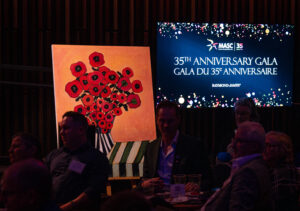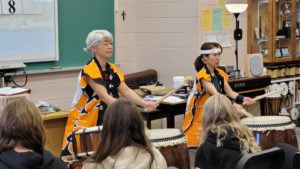Interview: Pow wow dancer and educator Rhonda Doxtator
By Jessica Ruano | December 2, 2021

This interview was originally published on Apt613.ca
Rhonda Doxtator is a pow wow dancer from the turtle clan of Oneida nation, and her Haudenosaunee name is Kawisaha, which means “She is Carrying Ice.” She spends a lot of her time travelling to various native communities to teach dance and regalia-making to the youth. Here, Rhonda talks about working with both Indigenous and non-Indigenous youth, finding cause for celebration beyond Canada’s devastating history of colonization, and art as medicine.

MASC: Among other passions and talents, you’ve been a pow wow dancer for 30 years. How did you develop this skill, and what approach do you take to sharing this art form as a performer and educator?
Rhonda Doxtator: Being of an eastern longhouse culture, pow wows were not a traditional event in my community. It was not until my grandmother started taking me to pow wows across Southern Ontario and various states that I became aware of this type of singing and dancing. Within this pow wow circle, I found a new way of life. It would become my space to learn new ways, to further understand my role as an Indigenous youth, and to show love for all my relations within creation. The songs and the various dance styles were all very different from the Iroquois style I was born into. I watched the other dancers very closely, trying my best to follow the older, more experienced dancers and their intricate step work. The pow wow would become instrumental in nurturing my sense of pride, confidence, belonging, and spirituality, and it would increase my extended/adopted family by the dozen.
The pow wow has saved my life in many ways. It kept me away from harm; it also kept me immersed in my culture and would nurture my connection with creation. It would steer me in a good direction. And it would allow me to take what I have learned and pass it on to my own children and the children of others.
When I visit Indigenous communities, it is to teach dance, and how to sew pow wow regalia. It is a platform to help instil strength, pride, connection, and positivity to the lives of the young people and their families. Culture for our youth is a lifeline.

When I visit non-Indigenous youth and schools, it is to educate about Indigenous people as a whole. The history, culture, current issues we face, the lasting impacts of residential schools, the sixties scoop, murdered and missing Indigenous women and girls, and the many other layers of colonization that have had devastating effects on my people. While many of these issues are often seen as dark and negative, there is still room and cause for celebration. We still have much to appreciate and be thankful for. This is the balance. Taking the good with the bad and thriving anyway. These pow wow dance styles are captivating and very spiritual and all tell a story.
This art form, coupled with an organization like MASC, creates the perfect opportunity to bridge many gaps. Art gives us a voice. It gives us a perspective. Art is an outlet, and a spiritual act. It is a medicine to be nurtured and shared.
You’ve been a member of MASC for more than 10 years! What do you gain through sharing knowledge and promoting cultural awareness in schools and in the community?
I like to think that sharing knowledge and promoting cultural awareness is key to the growth of humankind. We have all come from unique places, with unique qualities, and hold unique teachings from each place. When we learn about one another, we are creating a space for understanding, sharing, and respect.
When working with students, it is an opportunity to use culturally artistic platforms to reinforce traditional teachings of self-love, respect, kindness, and sharing in such a way that all students can apply it to all aspects of their lives.
I feel much gratitude for MASC for creating the means for artists to do this type of work. It allows the artist the ability to focus on the craft.

Why do you think it’s important for the local community to have access to professional artists?
Having access to professional artists broadens the learning experience for the participants. Professional artists have taken extensive amounts of time and energy in developing their skill set and the delivery of their craft. The artists who are a part of the MASC family are hand-picked. Their emphasis on authenticity ensures that each experience is one that is true and legitimate. When we examine our artistic cultural practices as Indigenous peoples, it is known that our songs, dances, artwork, and craftwork all hold significant spiritual meaning. That significant and spiritual connection is expressed through a multitude of artistic forms. Our songs are prayers. Our dances are prayers. Our artwork are ancient accounts of history, prophecy, and agreements between nations. It is in many cases a formal means of healing maintained and practiced by Indigenous peoples since time immemorial. The same can be said for songs, dances, and various forms of artistic expression worldwide. They serve as a means of healing, inspiration, and connection. For many, myself included, it is medicine.
What have you learned about yourself as an artist and storyteller during COVID-19?
Since the lockdown, I have taken to the sewing machine morning, day, and night to make textile masks for friends, family, seniors, and essential workers. I have been reminded of how important the arts are for the well-being of people. How the arts can help to keep us balanced and well as we navigate through these unfamiliar circumstances. We will not be moving forward in the same manner as we did in the past. This is going to directly affect the way we deliver our craft as artists.
Although it has been a very difficult time for many, I have given myself permission to take this time of isolation to nurture my spirit and recharge my battery to be ready for what is coming next.
Latest News
View All Articles



